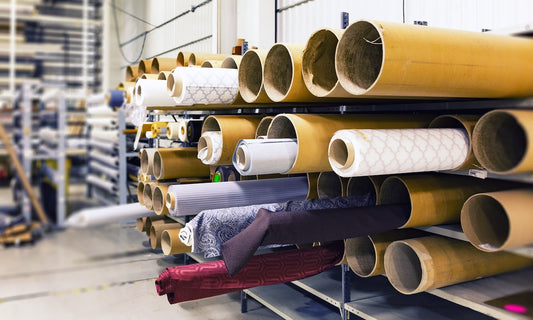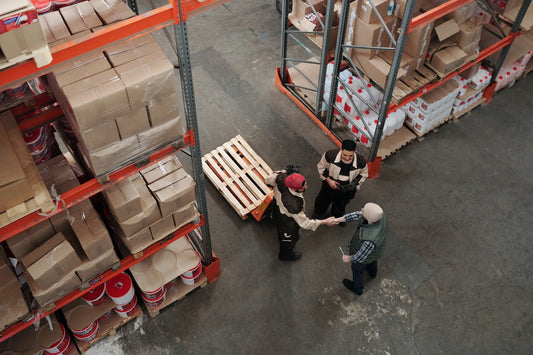In the business world, understanding the roles of manufacturers and distributors is pivotal. These entities are the backbone of the product-based economy, bringing goods from the drawing board to consumers' hands. This guide sheds light on the key differences, operations, and interplays between manufacturers and distributors, ensuring you gain a comprehensive understanding.
Manufacturer vs distributor
A manufacturer is an entity that creates products from raw materials or components. They are the creators, the innovators, and the craftsmen of the business world. On the other hand, a distributor is a middleman that purchases products from manufacturers and sells them to retailers or directly to end-users.
Roles in the supply chain
Manufacturers produce and supply goods, while distributors ensure these goods reach their intended audience, whether it's a retail store or a final consumer. They form a symbiotic relationship in the supply chain, where each relies on the other for success.
Key differences
Manufacturers are creators; distributors are deliverers. While manufacturers focus on producing and maintaining product quality, distributors emphasize sales, market reach, and logistics.
How Manufacturers Operate
Production processes
Manufacturers employ a variety of processes, from manual labor to automated machinery, to convert raw materials into finished products.
Custom product designs
Innovation is the cornerstone of manufacturing. Many manufacturers offer custom product designs to meet specific client needs, ensuring uniqueness in the market.
Quality control methods
Manufacturers implement stringent quality control checks to ensure their products meet set standards. These measures guarantee consistency and build brand trust.
Working Dynamics of Distributors
Stocking and inventory management
Distributors maintain inventories, ensuring they always have products in stock to meet market demand. This involves strategic buying and storage practices.
Building relationships with retailers
Distributors thrive on relationships. By forging strong ties with retailers, they ensure smooth transactions and sustained business growth.
Pricing strategies
Profit is king in distribution. Distributors employ various pricing strategies to maximize their margins while offering competitive prices to retailers.
Interrelation in the Supply Chain
How manufacturers and distributors work together
Collaboration is key. Manufacturers provide products, while distributors offer market insights and feedback, fostering mutual growth.
The importance of communication
Open communication between manufacturers and distributors is essential for a seamless supply chain. It ensures timely deliveries, addresses challenges, and anticipates market shifts.
Advantages of Manufacturers
Control over product quality
Manufacturers have the upper hand in ensuring product quality, overseeing the entire production process.
Ability to innovate
Being at the helm of product creation allows manufacturers the freedom to innovate and introduce new products to the market.
Cost efficiency
Manufacturing in bulk often results in economies of scale, translating to cost savings and higher profit margins.
Advantages of Distributors
Access to wider markets
With their extensive networks, distributors can tap into markets that manufacturers might find challenging to reach directly.
Risk diversification
By handling multiple products from various manufacturers, distributors spread their risks, insulating themselves from market fluctuations.
Efficient logistics management
Distributors are logistics maestros. They manage transportation, warehousing, and delivery, ensuring products reach their destinations promptly.
Challenges in Manufacturing
Meeting consumer demands
Consumer preferences are ever-evolving. Manufacturers grapple with the challenge of keeping pace and meeting these dynamic demands.
High overhead costs
Production processes, especially for large-scale manufacturers, can incur high costs, squeezing profit margins.
Regulatory compliances
Manufacturers often navigate a labyrinth of regulations, ensuring their products meet local and international standards.
Challenges in Distribution
Transportation and logistics complications
Distributors often need help with transportation delays, damaged goods, or customs issues.
Fluctuating market demand
Market demand can be unpredictable. Distributors must anticipate these shifts to manage their inventories effectively.
Inventory mismanagement
Holding too much or too little inventory can lead to financial losses and missed market opportunities.
Choosing Between the Two
When to consider manufacturing
Manufacturing might be your calling if you're passionate about product creation and have the resources to manage production processes.
When to consider the distribution
Distribution could be your sweet spot if you have a knack for sales, networking, and logistics management.
Hybrid models
In today's agile business world, some entities adopt hybrid models, merging the best of manufacturing and distribution. This model offers flexibility and diversified revenue streams.
The Future of Manufacturing
Technological advancements
From AI to robotics, technology is revolutionizing products, ensuring efficiency and precision.
Sustainability and green manufacturing
Eco-friendly manufacturing is the future, with companies adopting sustainable practices to reduce environmental impact.
The Future of Distribution
E-commerce and online platforms
Online sales platforms are reshaping distribution, offering direct-to-consumer models and bypassing traditional retail channels.
Changing consumer preferences
As consumers become more informed, distributors must stay ahead by offering quality products catering to modern preferences.
FAQs
-
What's the primary role of a manufacturer in the supply chain?
Manufacturers are responsible for creating products from raw materials or components. They transform ideas and designs into tangible goods ready for market consumption.
-
Why are distributors vital to the retail industry?
Distributors bridge the gap between manufacturers and retailers or end-users. They handle the logistics inventory management and often offer market insights, ensuring that products reach the right audience at the right time.
-
Can a company be both a manufacturer and a distributor?
Yes, some companies adopt a hybrid model, where they manufacture and distribute their products. This model allows for better control over the supply chain and can lead to increased profitability.
-
How do technological advancements impact manufacturing?
Technology, like AI and robotics, streamlines production processes, ensures precision and reduces human error. It also enables manufacturers to meet growing demand more efficiently.
-
What challenges do distributors commonly face in the global market?
Distributors often grapple with fluctuating market demands, transportation and logistics complications, currency exchange rates, and navigating international regulations and customs.
-
How do manufacturers ensure product quality?
Manufacturers implement stringent quality control checks at various stages of production. They often use a combination of manual inspections and automated systems to ensure products meet set standards.
Conclusion
The roles of manufacturers and distributors are distinct yet deeply interconnected. While manufacturers bring products to life, distributors ensure they reach their destined consumers. Understanding the dynamics of "manufacturer vs distributor" offers insights into the backbone of our consumer-driven economy. As the future beckons with technological advancements and changing consumer preferences, manufacturers and distributors will have to evolve, adapt, and collaborate more than ever to stay ahead.


